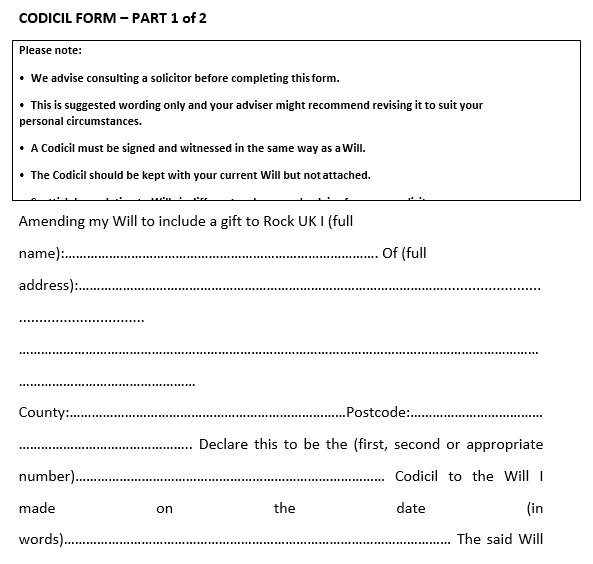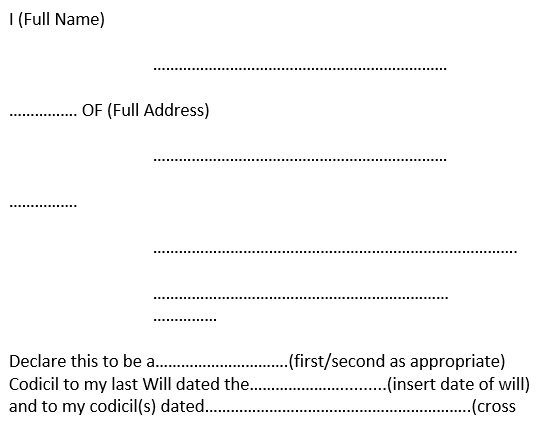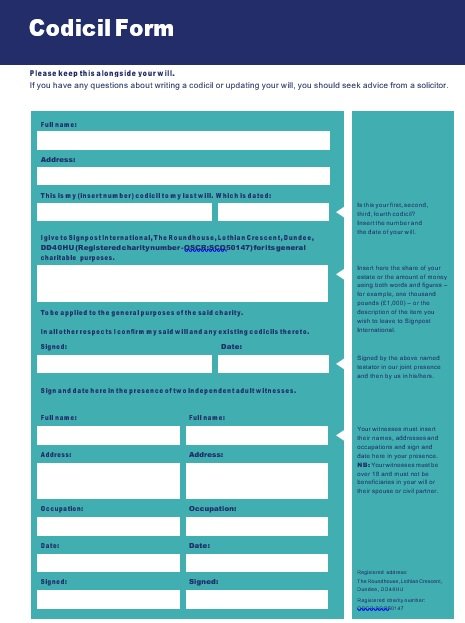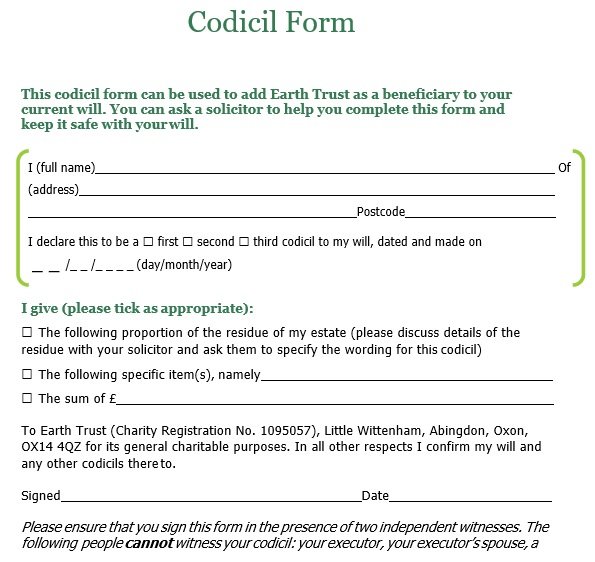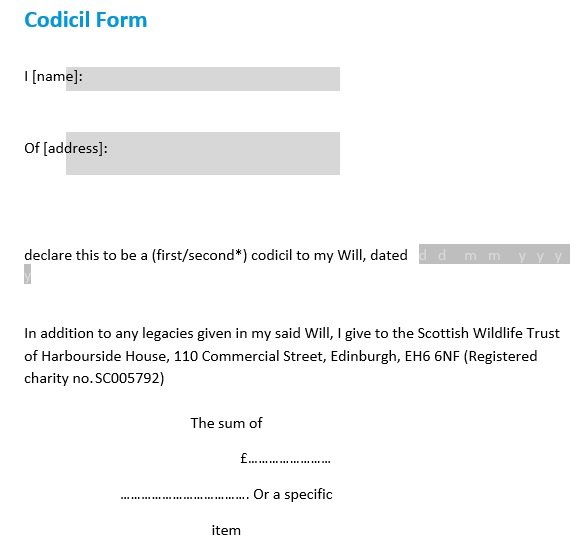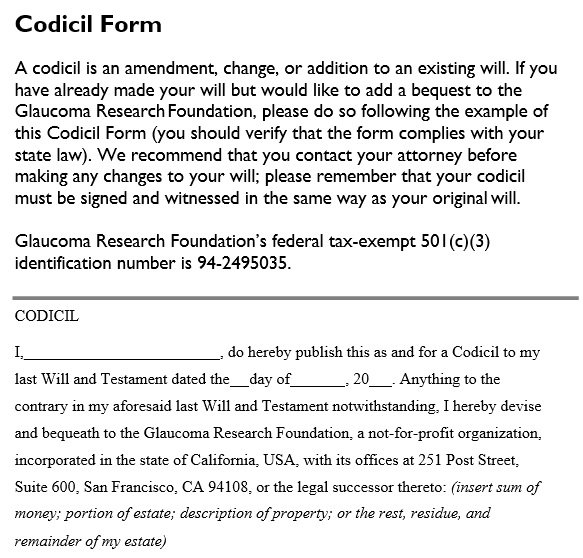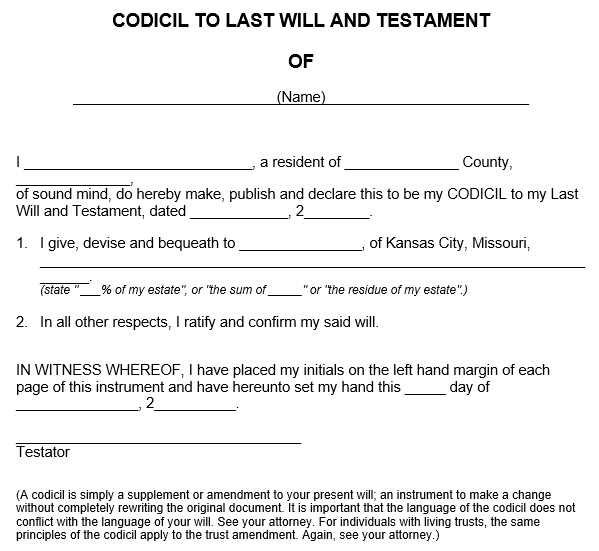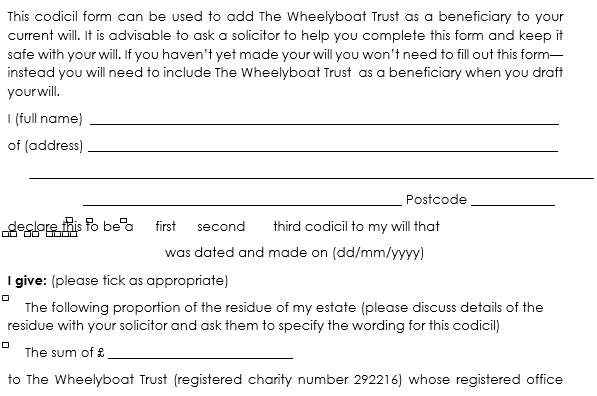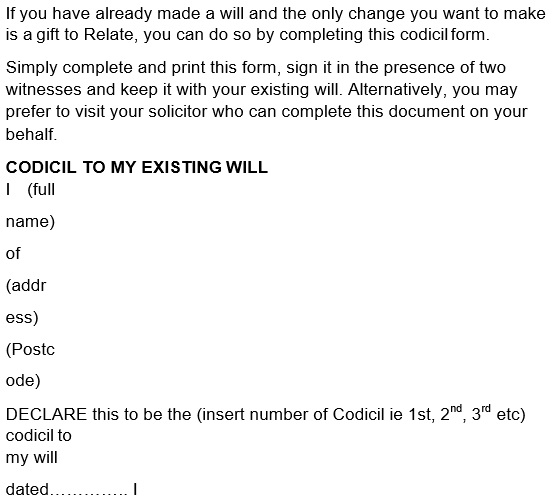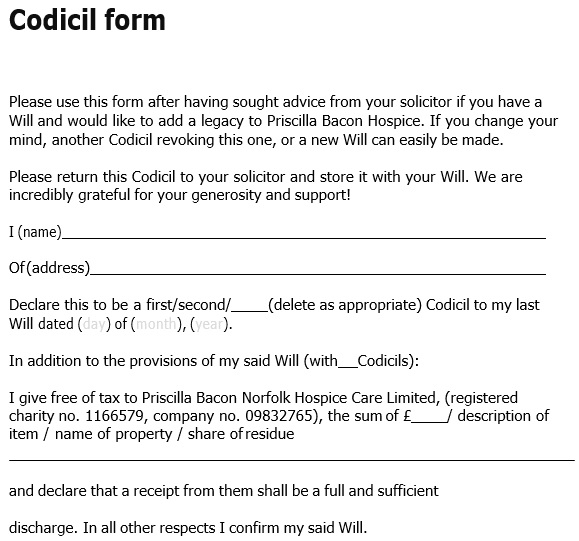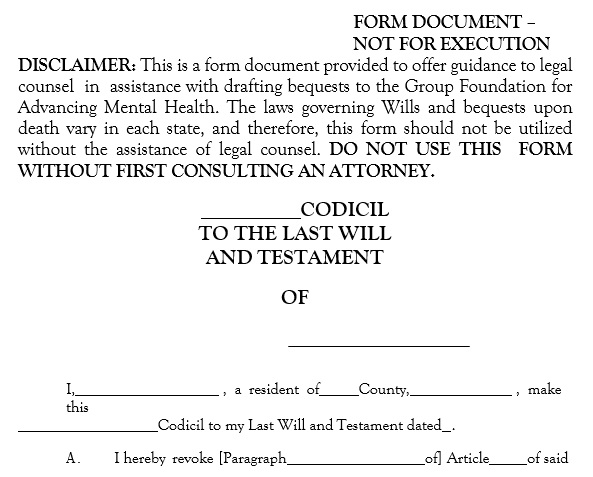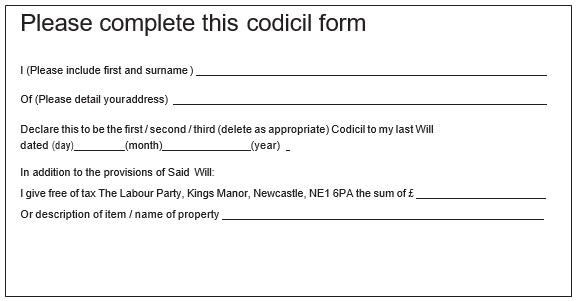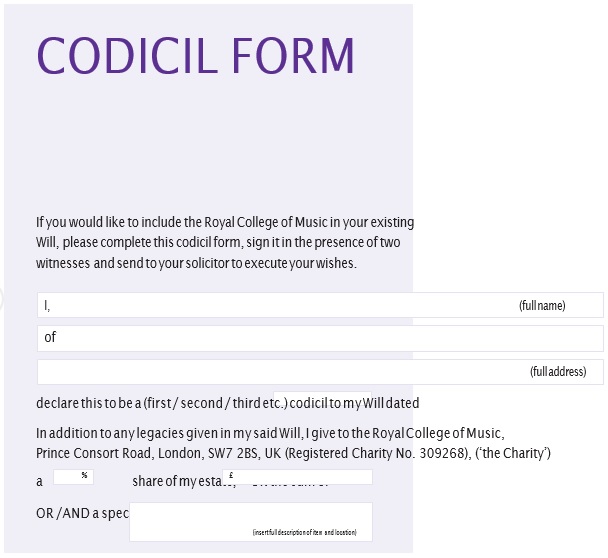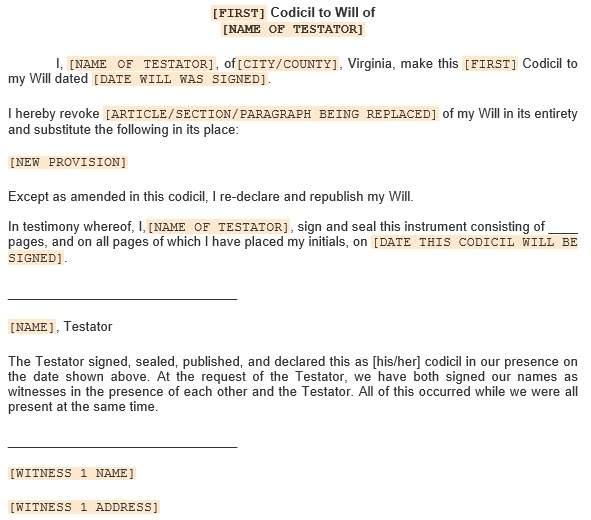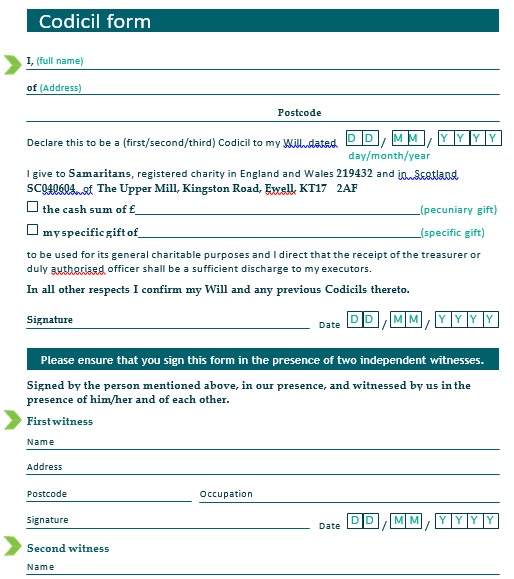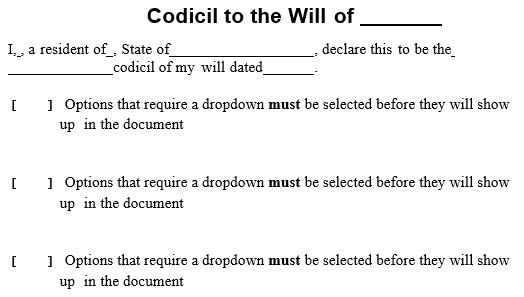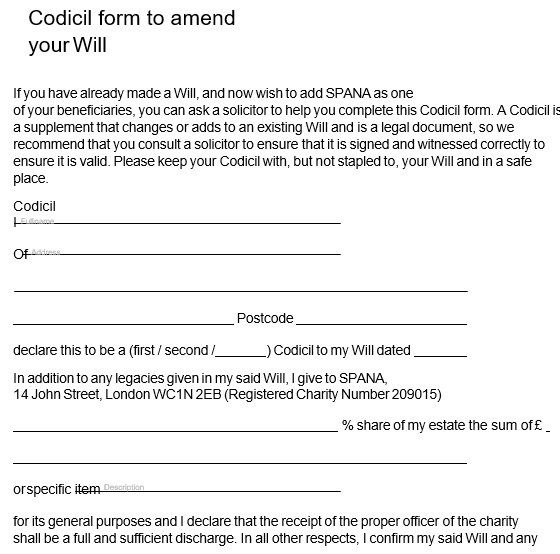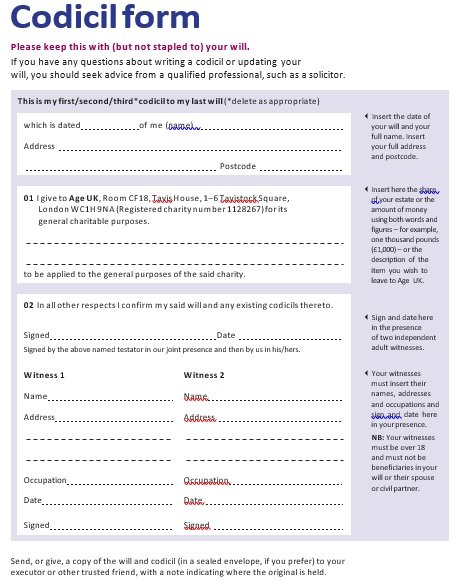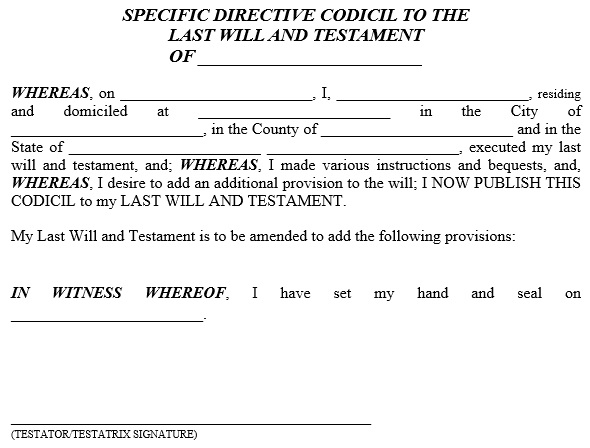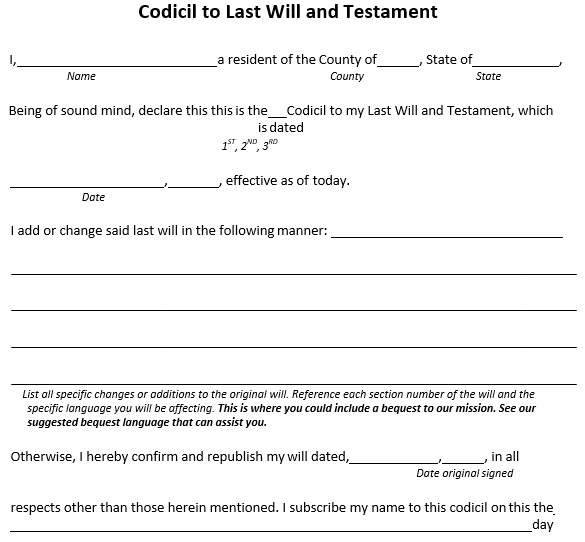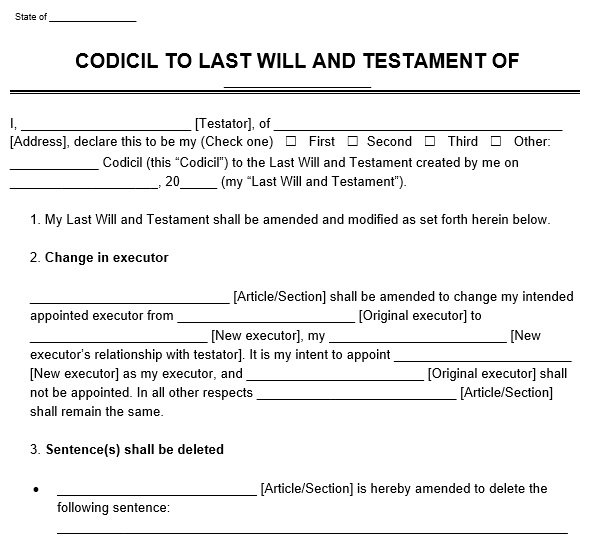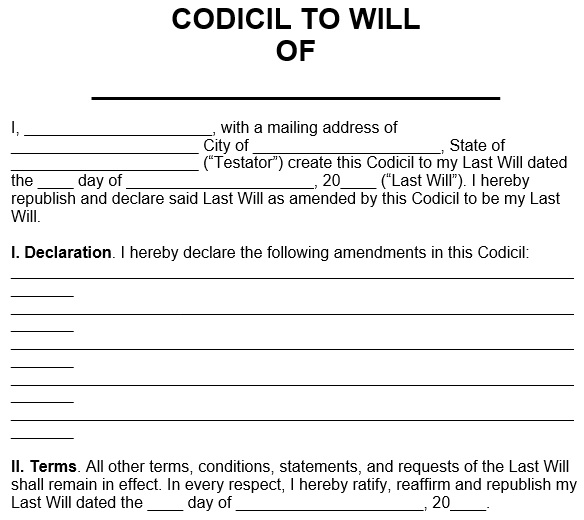You need a codicil to will form if you have a will and you want to make additions that will change, revoke, or describe the contents of your will. This is an official document that enables you to make modifications to the contents of your will. By having this document, you don’t have to completely replace or rewrite the original document.
Table of Contents
What is a codicil to will?
A codicil to will is a way of making amendments or adaptions to your previously executed Last Will and Testament such as explaining something new. You have to make a codicil if you want to become able to update your Will. It is used to make minor or major amendments to your original Will. Furthermore, during making modifications to your Will, you should make sure that it doesn’t change the meaning of the original will.
What does a codicil mean?
In order to modify, alter, revoke, explain, or add to an existing last will and testament, the codicil form is used. You will require this document if you want to make any important amendments that have an impact on the arrangements and dispositions after your death.
Moreover, this document is highly suggested when you have to make a relatively minor change in your will. However, this modification won’t substantially re-write the whole document. For small changes, you can easily use a codicil to will.
For instance, you may want to add a new property to your will then using this document works perfectly for these kinds of scenarios. You can use this document for the following purposes;
- For including new beneficiaries
- To make amendments to the executor of your existing will
- To include new assets or properties to your will
- For making small modifications to a beneficiary inheritance
- To make changes in marriage or other relationships
You should always consult with your lawyer while thinking you need this document or if you’re not certain about your situation. All of these aforementioned situations are suitable for using codicils. This is because it is relatively straightforward to make the amendments.
In these scenarios, beneficiaries aren’t likely to dispute the codicil. So, when it’s time to execute your will, their addition at some later time is also less likely to cause issues. But, in case, amendments in your will include big things and remove all of your beneficiaries then it’s better to create a new will.
How to modify a will?
Follow the below steps to modify your will;
Find the most latest version of your will
From your latest will, you require the effective date and a reference of the sections you want to change in order to complete the free codicil form. Also, you should have an original copy of your will. Provide this to the testator so that they can provide it a read-through to ensure that there aren’t any inconsistencies.
Decide what to change
By using a codicil to will, you can amend anything in your Will. Beneficiaries, executors, personal representatives and to mention a few are examples of these. The language and section that you want to amend, take note of them. In your codicil, you must reference these certain sections.
Compose the codicil
A codicil is very simple and basic and just includes the following in it;
- The name of the testator
- The address of the testator
- The creation date of your will
- The declarations or changes to your Will
Affix your signature
Two witnesses require for signing this document and having them witness as you sign. After that, they will also sign the document. You can select to attach a self-proving affidavit to your will if you add another layer of security. Other than the witnesses, for this attachment, a notary public is also required to become valid.
Attach the codicil to your will
Distribute your will after attaching it to the members of your family or other beneficiaries. It is suggested for security reasons to give a copy to your personal lawyer for safekeeping. Thus, you have successfully made a change to your will.
How to write a codicil to my will?
You should follow the below steps in order to compose a codicil example;
Determines what changes you want to make
Before introducing any change to will, you should first review it in order to determine the exact sections you want to change. No matter, how you have divided your will, you can find the title of the section you will change. In the document, write this section, to make it easier to find.
Thus, write down new information as soon as you have determined the parts of your will that you want to revise. For example, in your original will, you have state that you want to leave a coin collection to your sister then later when you decide to leave this collection to your grandchild. So, review this information is in your original will and then show your new preference. Your new preference will state that your coin collection will go to your grandchild.
Type all of the changes carefully
While typing this document, take your time. You can also review your original will in order to identify what language to use as the header of your will. Then, for this document, use the same.
Add a statement that determines your original will by date. Include all of the new provisions. Also, mention a statement that shows that all of the other provisions of your will won’t get modified.
Sign the codicil and date it
Keep in mind that a Codicil doesn’t have a signature as well as the date has no validity whatsoever. It should have your signature to show that its contents indicate your desires. When you created it in relation to your original will, this document also requires to have a date to give a probate court with information.
To your will, attach the codicil and store it securely
You have to ensure that you keep your will and codicil in a secure place. You must do the same for your codicil if you filed your will with a court. You should have all of your estate planning documentation in a single place. After your death, this will help your heirs avoid issues.
When do you require a Codicil to Will?
You may require it for making the following changes;
Modify the Executor
The executor is basically an individual who makes sure the implementation of your Last Will as well as handle the division of your estate. You are free to change the executor which is mentioned in your original Will for whatever reason.
Appointing a guardian
After finalizing your Last Will, if you buy a dog then make an addition of a guardian in your Will who will take care of your pet after your death.
Change the distribution of assets
Due to various, you may have to change the distribution of your assets in your Will such as you may invest in a new charity, someone leaves your life, and more.
Distributing new assets
In case, you bought new property then specify in your Last Will that how this new asset well be distributed.
Make amendments to your funeral planning
May be you want some changes in your funeral planning like you don’t want to have a traditional burial. So, instead of rewriting the whole thing, you should just modify that part of your Will.
Correct errors
If in your original Will, you may notice that your beneficiaries’ names is misspelled or any of your personal item isn’t explained properly so correct your that mistakes.
However, you should make a new will rather than using a codicil to will in case the required changes are drastic. During the probate process, you have to make sure that your original Will and each Codicil must have to be true and authentic statements of your desires.
Here are some situations in which you shouldn’t use Codicil;
- When the required modifications are essentially different than the nature of the distributions of the original will.
- In case, the testator got divorced, married, or has been fallen out with a beneficiary
- When a new baby is born or adopted
- When you as a testator experience a huge change in financial status.
- If the changes make any uncertainty or confusion.
Reasons for using a Codicil to Will form:
There might some situations occur as life in unpredictable that lead you to revise your Last Will. However, you don’t just have to remove unwanted provisions and write new ones. Some situations like ademption or other mistakes may allow you, and family members, to challenge your other parts of your Will. Thus, a Codicil makes you able to make minor amendments or correct minor mistakes. This also saves you time and expense of having to create an entire new will.
Conclusion:
In conclusion, a codicil to will form is an official document that makes you able to make changes to the contents of your will. This document allows you to make changes to your original will.
FAQ (Frequently Asked Questions)
Yes, without a lawyer, you can add an addendum to a Will. Also, a lawyer can make one on your behalf. The signature of testator and at least two witnesses who aren’t indicated in the original will are required in Codicil.
Yes, a handwritten codicil is considered legal. However, there is a huge chances of mistakes in a holographic codicil. The probate process becomes more difficult because of a handwritten codicil. It is advisable to make a typed codicil or hired an experienced lawyer for it.

